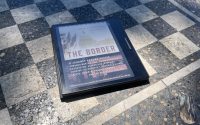How to use Sequoia and apps 18 with ipad Mirroring.
Apple’s WWDC 2018 keynote shows iPhone Mirroring in iOS 18 and macOS Sequoia.
Last updated 16 minutes agoApple iPhone Mirroring is now available in macOS Sequoia and iOS 18. How to mirror your iPhone screen on your Mac following the update. iPhone Mirroring was introduced as part of iOS 18’s feature update package. It promised to make life easier for Mac users who also owned an iPhone. Mac users may want to check a notification that is on their iPhone but it’s located on the other side or otherwise difficult to access. Or maybe they have an app installed on their iPhone, but not their Mac. Subscribe to AppleInsider YouTube. iPhone Mirroring was demonstrated during the WWDC Keynote. It is a feature that allows users to use their iPhone on their Mac display. They can use a trackpad or mouse instead of a finger and the keyboard to see the entire iPhone screen. They can also interact with apps like normal. All of this is done wirelessly and securely. The iPhone remains locked when the iPhone’s screen appears on the Mac. This ensures that no one else can access it remotely. Apple’s Continuity features include the new change. It’s similar to Universal Control, which uses a Mac’s keyboard and mouse to control a secondary Mac or iPad nearby. However, it’s an iPhone and appears on the Mac display. iPhone Mirroring, complete with window controls, buttons for Home and App switching and more. It was made available to users on June 24, as part of the second developer Betas of macOS Sequoia & iOS 18. The feature may not be available to all users until the fall. Apple is seriously considering not releasing some of its most important features in the European Union due to the interoperability requirements of the Digital Markets Act. iPhone Mirroring: How to get started? To use iPhone Mirroring, you will need an Apple Silicon or Intel Mac with macOS Sequoia. The latter requires a T2 security chip. Both the iPhone and Mac must have two-factor authentication enabled, as well as signed in with the same Apple ID. Both iPhone and Mac must be close to each other and have Bluetooth and WiFi enabled. AppleInsider has confirmed that after the initial connection, you can connect only using USB-C if you disable Wi-Fi or Bluetooth on the iPhone. We are not sure yet about Lightning but will update this post as soon as we know. Setting up iPhone Mirroring on macOS Sequoia requires that you not be using AirPlay, Sidecar or any other Mac feature before the feature is enabled. How to enable iPhone Mirroring on iOS 18 and macOS Sequoia. After installing the betas, and with the iPhone close to the Mac, a new icon titled iPhone Mirroring appears in the Mac’s Dock. Open it.
Click Continue.
Unlock the iPhone.
Click Get Started to return to the Mac.
Open iPhone Mirroring for Mac while the iPhone is locked.
You’ll be asked the first time if you want to authenticate every time or just the first time. Select Ask Everytime or Authenticate automatically.
You’ll then be presented with the iPhone display. When iPhone Mirroring is active, the iPhone will display a message that it is active and which Mac is using the feature. The iPhone display when iPhone Mirroring on the Mac is active, and the Mac display when you use the iPhone directly. The Mac will inform you that the iPhone is currently in use and that it needs to be locked to continue mirroring. Click on the mirrored screen where you would normally tap to activate iPhone Mirroring. You can move the window or access the iPhone’s Home Screen and App switcher by hovering the mouse upwards. Swipes are not possible. Apple made a few improvements to the feature during the beta testing process. You can now resize your window to make it larger on your screen. The View menu offers three sizes: “Actual Size,” “Larger,” or “Smaller.” You can also activate them by using the keyboard shortcuts Command 0 (or Command Plus), Command Minus, or Command-0.

